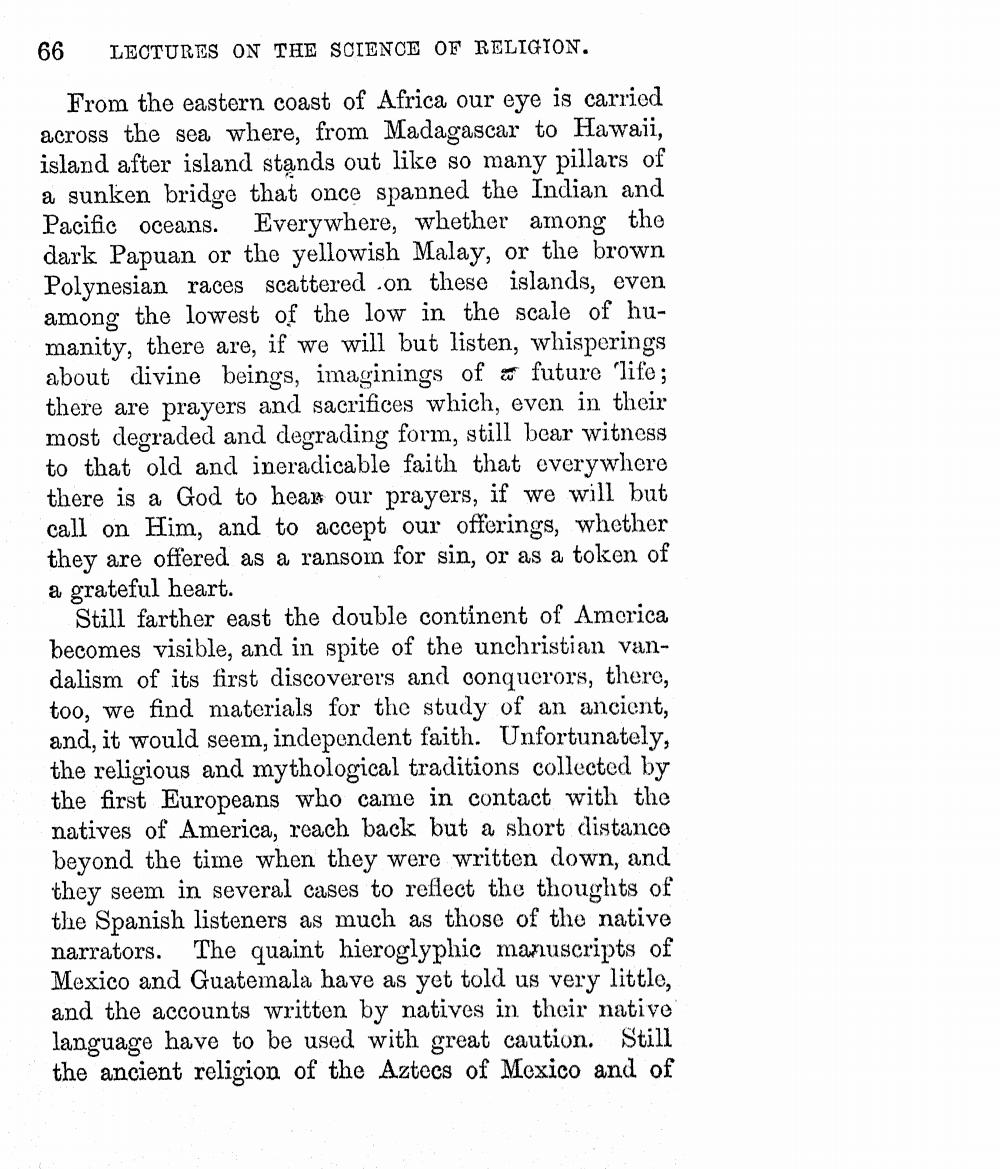________________
66 LECTURES ON THE SCIENCE OF RELIGION.
From the eastern coast of Africa our eye is carried across the sea where, from Madagascar to Hawaii, island after island stands out like so many pillars of a sunken bridge that once spanned the Indian and Pacific oceans. Everywhere, whether among the dark Papuan or the yellowish Malay, or the brown Polynesian races scattered on these islands, even among the lowest of the low in the scale of humanity, there are, if we will but listen, whisperings about divine beings, imaginings of a future life; there are prayers and sacrifices which, even in their most degraded and degrading form, still bear witness to that old and ineradicable faith that everywhere there is a God to hear our prayers, if we will but call on Him, and to accept our offerings, whether they are offered as a ransom for sin, or as a token of a grateful heart.
Still farther east the double continent of America becomes visible, and in spite of the unchristian vandalism of its first discoverers and conquerors, there, too, we find materials for the study of an ancient, and, it would seem, independent faith. Unfortunately, the religious and mythological traditions collected by the first Europeans who came in contact with the natives of America, reach back but a short distance beyond the time when they were written down, and they seem in several cases to reflect the thoughts of the Spanish listeners as much as those of the native narrators. The quaint hieroglyphic manuscripts of Mexico and Guatemala have as yet told us very little, and the accounts written by natives in their native language have to be used with great caution. Still the ancient religion of the Aztecs of Mexico and of




